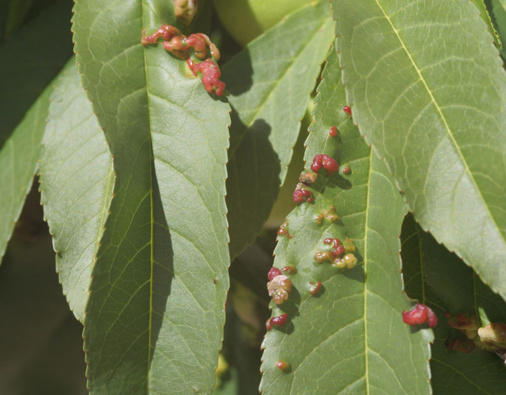Preventing Leafcurl on stonefruit
It’s extraordinary how many people ring our talk-back programme in spring and summer to raise the problem of leafcurl on stone fruit. And the answer will always be: “You’re too late!”
Taphrina deformans is the fungus that causes this leafcurl. The disease becomes active at bud-break: when the leaves and flowers come out of the buds in spring. The spores of Taphrina deformans are already settled on those buds, making infection quite easy.
Once the leaves are infected in spring, they become distorted and discoloured (pretty yellow and orange colouration); when infestations are serious the number of leaves that drop off can be substantial, causing a reduction in photosynthesis and hence the ability of the tree to “feed itself”.
In spring, with young, infected leaves (which are soft and delicate) there is no point in spraying with copper fungicides as that will burn those leaves quite badly.
Best thing to do is to remove and get rid of infected leaves as much as you can – especially fallen leaves. “Getting rid of them” does not mean COMPOSTING them!!
Fertilising the tree in spring allows it to make new leaves and get some resistance to infection, especially when you use Seaweed Tea and such marine-originated liquid fertilisers.
During the period when fruits grow and expand, check for fallen leaves that show signs of leafcurl, and get rid of them. REMEMBER “Getting rid of them” does not mean COMPOSTING them!!
Autumn is the time to start controlling leafcurl on stonefruit for the next fruiting season:
Around mid April, when the leaves are falling off the deciduous stone fruit trees, the new buds for the next season are formed. Taphrina deformans will then be invading those new buds and overwinter on those buds to infect the trees again in spring;
First thing to do is to remove all fallen leaves from under the trees. That reduces infection chances.
Next thing is to spray a double dose of copper spray (copper oxychloride, liquid copper, or copper-sulphur mixtures, available form garden centres) on the remaining leaves and on the branches/twigs of the tree. Don’t worry about “burning the rest of the leaves off: they were going to fall anyway.
Use a “sticker” if you can to increase coverage and stickability
Do this again a few weeks or a month later and ensure good coverage of all parts of the tree.
Some people use Lime sulphur; that’s OK too as a winter clean-up; seeing the trees are getting to dormancy this Lime Sulphur won’t harm the leaves either; but I think that lime may not be a great material for apricots as it has the ability to raise the pH levels.
A last smack of Copper spray before budburst should “mop up” the last surviving spores before the flowering and fruiting season begins again.
Take your Radio, Podcasts and Music with you










